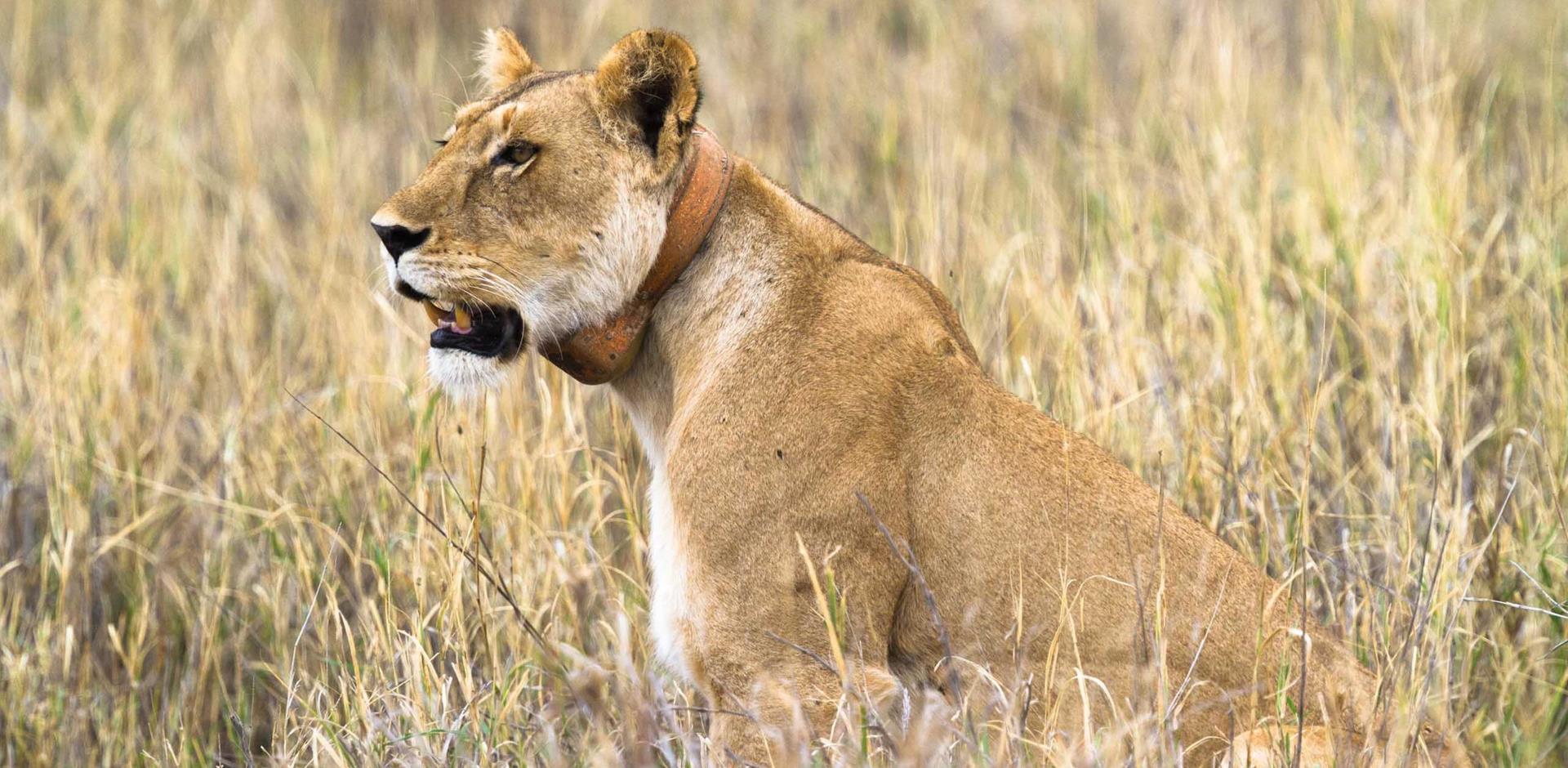Born Free Foundation
A lion also features at my next destination. And not any old lion. Meru National Park was home to Elsa, the star of Born Free – the five million selling book and adored movie – in which George and Joy Adamson reintroduced an orphaned lioness into the wild. Our lodge, Elsa’s Kopje, happily embraces its famous backstory with movie memorabilia, gorgeous photographs of George and various lions, and artefacts from Joy’s life, including her painting easel.
My arrival is perfectly timed. I coincide with a visit by Virginia McKenna, the actor who portrayed Joy (her husband, Bill Travers, played George). Still charming and charismatic in her early 90s, she answers copious guest questions and hosts an entertaining evening, recounting tales of filming, from stalking alongside the lions at ground level to a lioness dropping a freshly killed gazelle at her feet. “We’d become part of the pride.”
The experience laid the foundations of the couple’s passion for conservation. “You couldn’t be the same person once you’d met George,” she recalls. “He was so humane, so kind, so understanding. You wanted to share his philosophy.”
And that’s exactly what they did, eventually launching the Born Free Foundation. In the wide breadth of its campaigning, from opposing ivory trading, wildlife trafficking and the exploitation of captive animals, to protecting endangered species, it consistently aims to give animals a voice.
On a sun-kissed morning, we explore some of the fruits of its labour. An impromptu safari, spotting rhino, takes us to Kajoo School, just outside the park, where the foundation has funded classrooms, facilities, and textbooks. On arrival, Virginia is mobbed by excited children before she discusses future projects with the headteacher, including funding daily fruit for each child and repairing the school bus for twice-monthly picnics in the park. Most of the schoolchildren have never crossed its boundary. “It’s essential to show them the wild,” she says. “It’s exactly the sort of thing that will ensure Meru continues to exist.”
Back in 1999, the opening of Elsa’s Kopje helped rehabilitate the park following poaching and land invasions. The higgle piggle of atmospheric thatched cottages, all exposed boulders and tree-branch showers, merge seamlessly into Mughwango Hill. Hyrax grace the reception, genet cat the restaurant and local leopards drink from its swimming pool, while ‘Elsa’s pride’ occasionally rolls up from the valley floor.
Outside, guests enjoy near exclusive access to one of East Africa’s most diverse national parks, which features forked doum palms looming above forests, lava fields, swamps, and ochre grassland. One safari drive reveals three north Kenyan ‘specials’: reticulated giraffe, Grevy’s zebra and Somali ostrich. Another lets me follow a lioness for a silent hour as she stalks a waterbuck, her mission finally sabotaged by screeching baboons.
Accompanied by Virginia, I also visit three Born Free landmarks: Elsa’s grave and George’s camp and pool, to which he and two lions would trek for 22 kilometres through the bush. “It’s wonderful this story has lasted all these years,” she says, as a crimson sun bleeds into the Nyambene Hills. “It will live on because people are longing to be inspired by something other than shopping or politics, something far more profound.”

